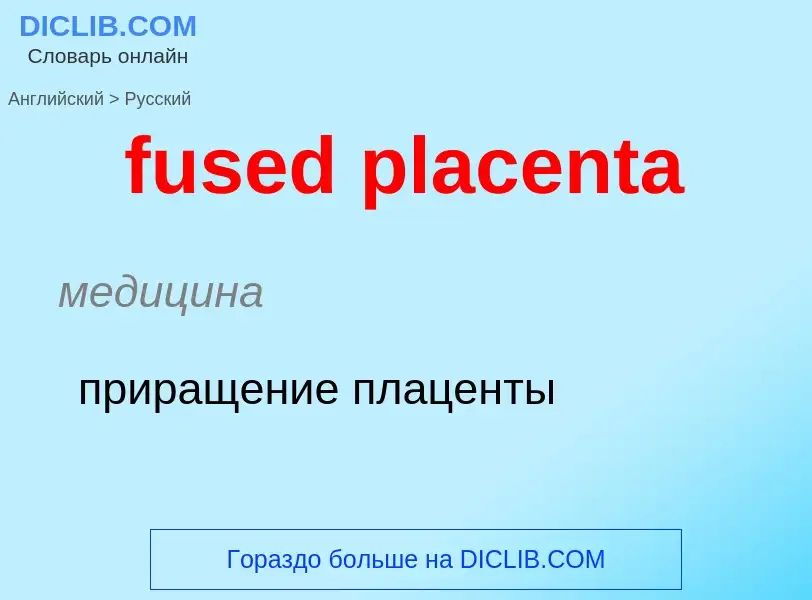Μετάφραση και ανάλυση λέξεων από την τεχνητή νοημοσύνη ChatGPT
Σε αυτήν τη σελίδα μπορείτε να λάβετε μια λεπτομερή ανάλυση μιας λέξης ή μιας φράσης, η οποία δημιουργήθηκε χρησιμοποιώντας το ChatGPT, την καλύτερη τεχνολογία τεχνητής νοημοσύνης μέχρι σήμερα:
- πώς χρησιμοποιείται η λέξη
- συχνότητα χρήσης
- χρησιμοποιείται πιο συχνά στον προφορικό ή γραπτό λόγο
- επιλογές μετάφρασης λέξεων
- παραδείγματα χρήσης (πολλές φράσεις με μετάφραση)
- ετυμολογία
fused placenta - translation to ρωσικά
медицина
приращение плаценты
медицина
предлежащая плацента
предлежание плаценты
общая лексика
кварцевое стекло
Ορισμός
Βικιπαίδεια

Placenta praevia is when the placenta attaches inside the uterus but in a position near or over the cervical opening. Symptoms include vaginal bleeding in the second half of pregnancy. The bleeding is bright red and tends not to be associated with pain. Complications may include placenta accreta, dangerously low blood pressure, or bleeding after delivery. Complications for the baby may include fetal growth restriction.
Risk factors include pregnancy at an older age and smoking as well as prior cesarean section, labor induction, or termination of pregnancy. Diagnosis is by ultrasound. It is classified as a complication of pregnancy.
For those who are less than 36 weeks pregnant with only a small amount of bleeding recommendations may include bed rest and avoiding sexual intercourse. For those after 36 weeks of pregnancy or with a significant amount of bleeding, cesarean section is generally recommended. In those less than 36 weeks pregnant, corticosteroids may be given to speed development of the baby's lungs. Cases that occur in early pregnancy may resolve on their own.
It affects approximately 0.5% of pregnancies. After four cesarean sections, however, it affects 10% of pregnancies. Rates of disease have increased over the late 20th century and early 21st century. The condition was first described in 1685 by Paul Portal.



![An [[EPROM]] with fused quartz window in the top of the package An [[EPROM]] with fused quartz window in the top of the package](https://commons.wikimedia.org/wiki/Special:FilePath/EPROM Intel C1702A.jpg?width=200)

